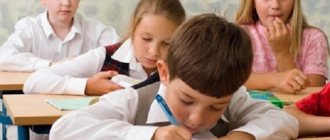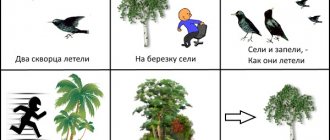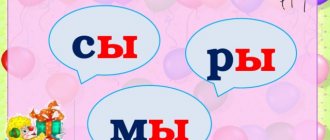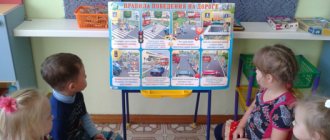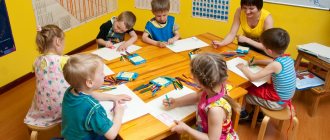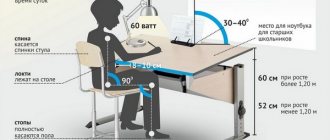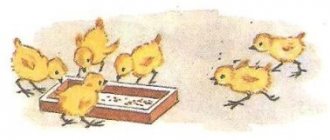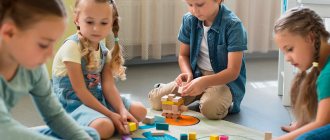What is an individual curriculum
A curriculum is a document that describes in detail what subjects schoolchildren study, how many hours are devoted to studying each subject, in what sequence the training takes place and how it is controlled. The difference between an individual plan and a regular plan is established by the law on education: an individual educational plan (IEP) takes into account the characteristics of a particular student and his learning needs. When developing an IEP, the basic program is adjusted to the student’s capabilities so that he can successfully cope with his studies.
What are the features of IEP
The main task is to provide the child with an education taking into account his characteristics, choosing the optimal level of educational programs for him, the pace and timing of training. With the IEP, it is allowed to change the list of subjects, the depth of their study, and the sequence of studying subjects during the academic year. But there is an important limitation: the procedure for organizing training according to an individual curriculum should not go beyond the federal state educational standards of general education (FSES).
Peculiarities:
- Ability to change the complexity of training. It is allowed to reduce or increase the hourly load. If a subject is taught at a basic level at school, a student in the IUP is allowed to study at an advanced level in that subject. For example, study mathematics in depth at a school with a humanitarian focus. If at school a subject is studied at an in-depth level, the student at the IEP is allowed to be given material at the basic level. For example, in a school with a mathematical bias, study geometry and algebra at a basic level.
- Ability to change the sequence of study. If a school provides instruction in all subjects at once, a student using an individual plan is allowed to study subjects sequentially, in the form of blocks or modules. For example, first study the entire chemistry course, then the entire physics course, then the Russian language course. It is allowed to combine sequential and parallel study, when one or more subjects are taught weekly during the year, and the rest are studied in blocks.
- Ability to change the list of items. It is allowed to add or remove subjects to the curriculum if this does not contradict the Federal State Educational Standard.
Frontal speech therapy session with presentation for the senior group, taking into account the Federal State Educational Standard for Preschool Education
Frontal speech therapy lesson for children of the senior group “Jam from the clouds”
The article was compiled based on materials from Elena Matvienko, Lydia Slutskaya, E. Koshkarova, T. Kersten.
This material is intended for speech therapists and kindergarten teachers.
The lesson notes were compiled taking into account the federal educational standard for preschool education. Frontal speech therapy lesson for children of the senior group “Jam from the clouds” Goal: the formation of positive attitudes towards various types of work and creativity. Program content Educational objectives: - teach children to establish contact with each other, promote group cohesion; - help reduce emotional stress and impulsiveness. Developmental: - develop attention, speech, imagination, memory, thinking. Educational: - cultivate a friendly attitude towards each other. Preliminary work: Vocabulary work: self-massage, landscape. Materials and equipment: multimedia presentation, gas scarves of different colors, handouts for non-traditional finger painting “Baby Elephant”, stereo system, fermented milk product.
Progress of activities:
I. Organizational moment. 1. Game - greeting with musical accompaniment. 1: Come in, come in, all the kids! It's good that you came. - Well, hello, guys! - Hello! - How are you feeling? - Very good! - It's time for us to get busy. - Yes Yes Yes! - We will all try - Just like always. - We will draw and answer questions. I ask you guys to repeat after me. 2: Come in, the puppies have come to visit us. Answer as they do. - Well, hello, puppies! - Woof woof woof! - How are you feeling? - Woof-woof-woof-woof-woof! - It's time for us to get busy. - Woof woof woof! - We will all try - Woof-woof-woof-woof-woof! - We will dance and sing songs. I ask you, puppies, to repeat after me. 3: Come in, come in, all the kids! It's good that you came. - Well, hello, guys! - Hello! - How are you feeling? - Very good! - It's time for us to get busy. - Yes Yes Yes! - We will all try - Just like always. - We will draw and answer questions. I ask you guys to sit down at the table now. II. State the topic and purpose of the lesson. - Today you and I will play with the clouds. And you will find out how we will do this a little later. III. Main part. 1. Conversation about what color clouds are. — Guys, what color are clouds? - White! - Is it only white? No. Clouds come in other colors, and you will find out which ones by watching the presentation. Attention to the board. 2. Multimedia presentation with musical accompaniment “Sunset Jam” Have you ever tried Sunset Jam? Here it is strawberry, Well, and then blueberry. A bit unusual, but tastes great. Such a wonderful dinner is always ready for us. Don't forget to blow off the foam from the fresh clouds. 3. Discussion of what was seen. — What color are clouds? - Red, orange, blue, purple, gray, single, crimson. - Why is this happening? — The sun rises and sets, painting the clouds in different colors. 4. Self-massage with handkerchiefs. The guys receive gauze handkerchiefs of different colors and do self-massage under the guidance of an educational psychologist. — The clouds are falling onto our palm. — First we stroke the right palm, then the left palm. — We stroke the arms from the shoulder to the fingers. — We pass the handkerchief between our fingers. - Let's hide the cloud in our fist and release it. Place tissues next to the child. 5. Physical exercise “Baby Elephant on a Cloud.” There lived a gray little elephant on a white cloud. He flew quietly across the blue sky. And the little elephant trumpeted colorful songs about what he saw and loved. When he looked at the bright Sun, He sang red songs cheerfully. When he lowered his head down, he sang green songs. 6. Collective work in the non-traditional technique of finger painting (trunk) with the help of a baby elephant. – We are not releasing the baby elephant. We will ask him to stay with us and help us draw clouds in the sky. IV. Summary of the lesson. - What did you like?
-What was fun? “And now we’ll all taste the clouds together.” The guys taste the clouds (fermented milk product). Presentation for frontal speech therapy classes for the senior group, taking into account the Federal State Educational Standard for Preschool Education
We recommend watching:
Notes on speech therapy for the senior group. Notes on a game lesson in the senior group on speech development. Notes on an individual lesson on differentiating sounds etc. for children in the senior group. Correctional and developmental activities with a subgroup of children 5-6. Abstract
Similar articles:
Musical lesson using logorhythmics in the senior group of a preschool educational institution
Summary of an integrated lesson on the topic “Animals” in the senior group
Lesson summary - travel for children of the senior group of preschool educational institutions on the topic: Birds
Summary of an integrated lesson on the topic “Space”. Senior group
Who can go
Those who need special learning conditions are transferred to an individual curriculum:
- schoolchildren who master educational programs slower or faster than their peers;
- schoolchildren who find it difficult to attend school on a common schedule due to sports (professional athletes), creative activities, or family circumstances;
- children who were unable to adapt to school;
- children with disabilities;
- schoolchildren with academic debt.
Transfer to an individual plan is permitted only with the consent of the parents and upon their written application.
The purpose for which individual curricula are developed depends on the reasons for the transition:
- in order to provide a deeper education than in the basic program;
- provide general education to children with persistent maladjustment to school;
- provide general education to children with disabilities;
- provide general education to children who are unable to master educational programs in a large group of children.
Schools issue local acts on transfer to IUP, which indicate other cases of transfer to individual education.
Planning speech therapy activities with children 2-3 and 3-4 years old
I period of study:September October November December
Development of speech understanding
To develop in children the ability to listen to spoken speech.
Learn to highlight the names of objects, actions, and some signs.
Develop an understanding of the general meaning of words.
Prepare children to master dialogic and monologue speech.
Activation of speech activity and development of lexical and grammatical means of language
Learn to name words with a one-, two-, three-syllable syllable structure (cat, poppy, fly, vase, shovel, milk).
Teach children initial word formation skills: teach them to form nouns with diminutive suffixes -ik, -k (house, forehead, ball, mouth; pen, leg, paw, fur coat, etc.).
Teach the skills of using grammatical categories in speech: numbers of nouns and adjectives.
Learn to differentiate the names of objects according to the category of animate/inanimate. Teach the skill of using quality adjectives in speech (big, small, tasty, sweet, beautiful, etc.).
Teach the skill of using masculine and feminine possessive adjectives “my - mine” in speech and their agreement with nouns.
Strengthen the skill of composing simple sentences using the model: address + verb in the imperative mood (Misha, go! Vova, stop!).
Learn to transform imperative verbs into indicative verbs (Misha is walking. Vova is standing).
Development of independent phrasal speech
To strengthen children's skills in composing simple sentences using the model: “Who? What is he doing? What?"
Teach children to memorize short couplets and nursery rhymes.
Develop dialogue skills, the ability to listen to a question, understand its content, adequately answer the question asked, redirect the question to a friend (I’m walking. What about you? Misha is eating. And you?).
Teach how to independently formulate questions (Who is walking? Where is the doll? Can I take it?).
Learn to make proposals to demonstrate actions and questions.
Strengthen the ability to finish a sentence started by a speech therapist.
To develop in children the skill of using personal pronouns in speech (I, you, he, she, they).
Teach children to compose their first simple stories of two or three sentences (using a question plan).
Lexical topics: “Kindergarten premises”, “Clothing”, “Shoes”, “Dishes”, “Fruits”, “Vegetables”, “Food”, “Toys”, “Autumn”, “Winter”, “New Year holiday” ", "Entertaining children in winter", etc.
II period of study:
January February March April May
Activation of speech activity and development of lexical and grammatical means of language
Teach children to use individual ordinal numbers in speech (one, two, many).
Learn to use common sentences in independent speech by introducing homogeneous subjects, predicates, and objects into them (Tata and Vova are playing. Vova took a bear and a ball.).
Continue learning to change nouns according to case category (dative, instrumental, genitive cases).
To develop an understanding and skill in using some simple prepositions in independent speech (on, in, under).
Learn to understand and use some of the most commonly used prefix verbs in independent speech (ate, drank, slept, served, left, carried away, removed, etc.).
Continue to develop skills in using nouns with diminutive meanings.
To consolidate the initial skills of agreeing adjectives with nouns in children’s independent speech.
To consolidate in independent speech the initial skills of coordinating numerals with nouns with productive endings (many tables, many mushrooms, many cows, etc.).
To develop initial skills in coordinating personal pronouns with verbs (I am sitting, he is sitting, they are sitting).
Teach children to select homogeneous subjects, predicates, objects in response to a question (For example: Who is sleeping? Dog, cat).
Learn to name the parts of an object to determine the whole (back - chair, branches - tree, hands - clock).
Learn to select words for the named word according to the associative-situational principle (sled - winter, ship - sea).
Learn to select nouns for the name of the action (ride - bicycle, fly - plane, cook - soup, cut - bread).
Teach children to guess the names of objects, animals, birds from their descriptions.
Teach children to use in independent speech some names of geometric shapes (circle, square, oval, triangle), primary colors (red, blue, green, black) and the most common materials (rubber, wood, iron, stone, etc.).
Development of independent phrasal speech
Strengthen the skills of composing simple sentences using the model: “Who? What is he doing? What?"; "Who? What is he doing? How?".
Expand the scope of sentences by introducing homogeneous subjects, predicates, objects (Tata and Vova are playing. Vova took the bear and the ball.).
Learn short couplets and nursery rhymes.
Strengthen dialogue skills: the ability to adequately answer questions and formulate them independently, redirect a question to a friend (I’m walking. And you? Vova is playing. And you?).
Continue to develop the skills of writing short stories of two, three or four simple sentences (using a picture and question plan).
Learn to make proposals to demonstrate actions and questions.
Improve the ability to finish a sentence started by a speech therapist with one or two words.
Development of the pronunciation side of speech
Teach children to distinguish between speech and non-speech sounds.
Teach children to identify the source of sound.
Learn to differentiate sounds that are distant and close in sound.
Clarify the correct pronunciation of sounds in the child’s speech.
Cause missing sounds (early and middle ontogenesis).
Automate delivered sounds at the level of syllables, words, sentences.
Teach children to clap the rhythmic pattern of words suggested by the speech therapist.
Form the sound-syllable structure of a word.
Teach children to differentiate short and long words by ear.
Teach children to remember and pronounce combinations of homogeneous syllables, for example: “pa-pa-pa” with different stress, voice strength, and intonation.
Learn to reproduce chains of syllables consisting of the same vowels and different consonant sounds (pa-po-pu) and from different consonants and vowels (pa-to-ku).
Learn to reproduce syllables with a combination of consonants (ta - kta, po - pto).
Lexical topics: “Games and entertainment for children in winter”, “Christmas”, “Epiphany”, “Christmas time”; “Help for birds and animals in winter”, “Warm clothes”, “The arrival of spring”, “Maslenitsa”, “Defender of the Fatherland Day”, “March 8”, “The arrival of birds”, “Natural phenomena of spring”, “People’s work in spring”, “Garden”, “Transport”, “Professions”, “Summer”, etc.
How to create an individual study plan
It is compiled by school employees. The main principle in compilation is to include in it items that are mandatory for the general education school curriculum. At certification, a child who has studied under the IUP goes through the same tests as his peers, without any concessions or special conditions.
Mandatory points of the IUP:
- the IUP includes all compulsory subjects at the basic level;
- include additional items at the basic level;
- include a regional component - those subjects that are required to be studied in specific regions of the Russian Federation (region, republic);
- take into account the requirements for students adopted at the school in which the student is transferred to the IEP.
General algorithm for making a curriculum:
- Talk with the student and his parents, find out all the features, the purpose of the transfer, the needs of the student.
- Determine the child’s level of knowledge, what he has learned, what he can do.
- Study the basic curriculum. The federal basic curriculum and exemplary curricula are in the appendix to the Order of the Ministry of Education of the Russian Federation dated 03/09/2004 No. 1312 “On approval of the federal basic curriculum and exemplary curricula for educational institutions of the Russian Federation implementing general education programs.”
- Study the school's educational program.
- Compile an IEP based on these data.
Sample of a student's individual educational plan
Features when eliminating academic debt
The transition to the IEP is an opportunity not to leave the child for the second year, but to conditionally transfer him to the next grade. In this case, an individual curriculum for academic debt is drawn up so that the student improves in problematic subjects, passes the debt and continues his studies.
How to register the transition to an IEP
The order of training according to the IEP is determined by the school. Not every school has the capabilities (free classes, staffed teaching staff) to organize it. But even in this case, any school must provide the opportunity to eliminate academic debt by switching to an IEP. The opportunity to study at school according to an individual curriculum is prescribed in the local regulations of the school. The regulations on the IEP are reviewed and adopted by the school’s pedagogical council, after which they are approved by order of the director.
We will provide a step-by-step procedure for transitioning to school.
Step 1. Parents write an application addressed to the school principal with a request to transfer to education under the IEP. In high school, the application is written by the student himself. The application indicates the period for which the IUP is required.
Sample application form for transfer
Step 2. The head teacher, together with the teaching staff, prepares an IEP. The plan is approved and its validity period is indicated. The schedule of classes and consultations will be agreed upon with parents.
Step 3. Parents enter into an IEP training agreement with the school.
Step 4. The school director issues an order to transfer the child to an IEP. The child is educated according to an individual plan, is enrolled in this school and is subject to all its rules.
Sample order
Step 5. Information about the student is entered into the training log according to the IEP.
December, January, February (2nd period of study)
Lexical topics: “Clothes”, “Shoes”, “Winter”, “New Year”, “Winter fun”, “Winter clothes”, “Wild animals”.
Corrective tasks:
a) Formation of vocabulary and grammatical structure of speech:
• continue to form and consolidate previously studied grammatical categories;
• develop an understanding and practical use of singular forms of nouns in the genitive and accusative cases with prepositions and in the prepositional case;
• to form an understanding and practical mastery of the prepositions U, NA, V, IZ.
b) Development of coherent speech:
• continue to develop and strengthen the skills of writing sentences and simple descriptive stories;
• teach the skills of retelling stories and fairy tales “The Three Bears”, “Kolobok” using questions and a picture plan;
• continue to develop dialogical speech skills in the process of developing communication in preschoolers.
c) Development of cognitive processes:
• color (blue);
• continue the work started in the first period;
• form a serial series “big, smaller, small”, “small, bigger, big”;
• form temporary ideas (winter).
d) Formation of phonemic perception and sound pronunciation:
• continue the work started in the first period;
• introduce the sounds “I”, “O”, “E”;
• learn to perceive by ear and correctly reproduce the simple syllabic structure of words.
